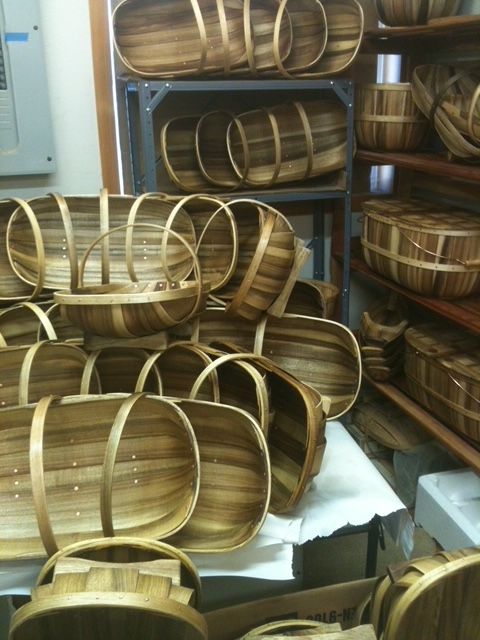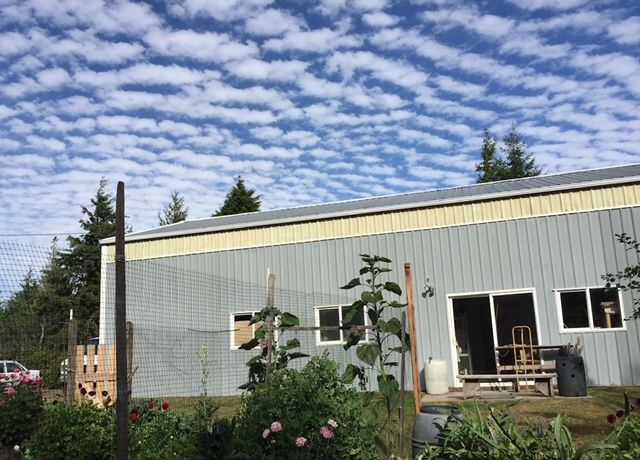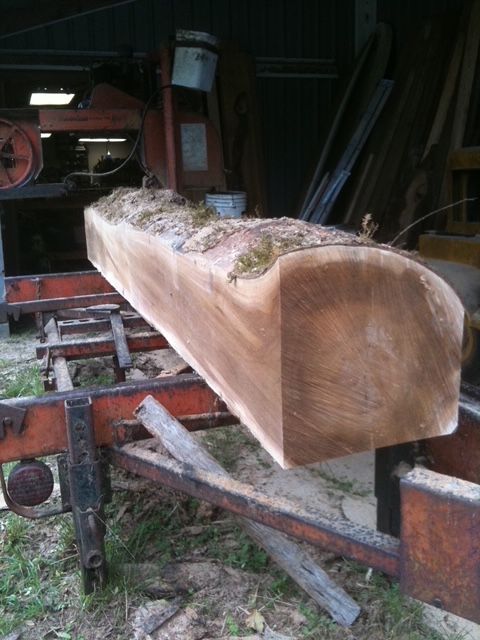
Timeless Trugs

We love to fill our homes with (and give as special gifts) beautiful handmade things that we actually and joyfully use. Baskets and trugs made by Barber’s Baskets are definitely in this category.
We’ve written about their handcrafted round baskets before. Here, we’d like to sing the praises of the trug, an elongated garden basket whose design has been in use for centuries. It’s perfect for carrying the flowers, fruit or vegetables you just picked from garden to indoors without crushing them. It’s a great companion at the farmer’s market.
We love the trugs that are future heirlooms made by Barber’s Baskets, a company started in 1979 in Coos Bay, Oregon by shipbuilder Don Barber at the end of his 40-year career making ocean-going boats. Over the years, many family members have worked for the business and today, Don’s son Greg and Greg’s wife Polly make the goods in a large workshop designed for basketmaking.
They use the same materials that Don used: copper nails and wood from myrtlewood trees indigenous to a small region in the Pacific Northwest that grow near the Barbers' workshop. The hardwood's colorful and dynamic grain is a hallmark of their products. It’s also what makes them so durable.
“[Greg and I] We’ve been a team since 1975. Before we started the basket making business we built and fished a forty-foot commercial fishing boat together here in Oregon,” Polly said.
We caught up with Polly Barber via email.

Oiled baskets ready for shipment
East Fork: What do you do at the company, Polly?
Polly Barber: I make the picnic and bushel style (round) baskets and help with every aspect of the operation: processing materials, procuring supplies, sanding and finishing, shipping and marketing. Did I mention sanding?!
EF: When you say Barber's Baskets is a Mom and Pop shop, does that mean it's just you and Greg? Did you have more people working with you in the past?
PB: Pretty much. We have had a lot of help at the basket shop over the years but we have scaled back considerably in the last few years. It’s a lifestyle choice. We like to help our current customers like East Fork market the baskets, but honestly we do not seek attention and with our limited production we often have to decline taking on new customers.

Picnic basket in progress in the shop
EF: Can you describe the space where you make the trugs and baskets?
PB: We eventually built a very large two-story workshop designed to build baskets in. Basically it is a horseshoe procession of rooms with each one having a specific purpose for each step of the basket-making process. The sawmill is near one entrance and the other end of the horseshoe pattern of spaces is where the shipping room pick-up door is.
Picture myrtlewood logs and the sawmill at one door and a UPS truck picking up cartons packed with baskets at the other door. It took a few years of working in an old boatbuilding shed and outbuildings when we first started making baskets to come up with the design for our present-day workshop.

The Barbers’ workshop
EF: How did the idea to make trugs come about? When did Barber's Baskets start making them? And how do they differ from baskets?
PB: When Greg’s father Don Barber retired from boatbuilding he and a neighbor (Bill, originally from Maine) started making baskets in 1979. Bill’s brother made baskets in Maine back then and our bushel style baskets were fashioned after his.
Greg and I soon started helping out with the project and before long we were selling the baskets at craft fairs and to local shops. We eventually designed and built the picnic basket and added more sizes of the round baskets. By then our baskets had made it out into the world. A basket purveyor in Chicago that distributed our work asked us to make a garden trug basket. We went to work on that but it took several years before producing a product suitable for market.
We start with milling the logs—selecting the right kind of log and sawing it specifically to get the best results for the basket we’re building. We have machinery and forms that we custom built for running out the materials. There are countless steps of sawing, shaping, drying, sanding, hot water bending, more drying and sanding and finishing.
We make them with Oregon myrtlewood, solid copper tacks made in the USA and finish the trugs with clear food grade mineral oil.

Myrtlewood log on the mill
EF: Collectors' items that are meant for everyday use: Is that an accurate way to describe the trugs your company makes?
PB: That is perfectly accurate!
EF: What makes them so durable?
PB: Good materials, a proven design and handmade with care.
